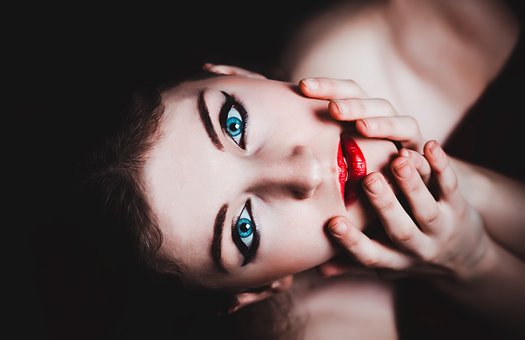 After reading up on beauty ingredients used in the past, it is amazing women survived it all, even when the products were declared safe.
After reading up on beauty ingredients used in the past, it is amazing women survived it all, even when the products were declared safe.Back in the days of the Ancient Greeks and Romans, people wanted to look as pale as possible so they used a moisturizer with lead and mercury because it gave them the look they wanted. In the process, the mixture also poisoned them to death.
Although there was a short period when women bled themselves to get the pale look, they went back to using lead. In addition, many of these beauty products added to the lead and mercury which caused madness, paralysis, and death. In Elizabethan times, women continued to use such mixtures and it is thought that Queen Elizabeth suffered from heavy metal poisoning. It is reported that in her final years of live, she lost her appetite, would suddenly loose her temper and throw things. She also developed paranoia claiming the Jesuits were out to get her and she'd brandish her sword at ghosts.
In the 16th century, there was a trend to drink liquid gold because it was believed that liquid gold would keep you young. Unfortunately, it could also cause the user to die. There was a case of Diane de Poitiers, King Henri II's mistress who used it because she almost 20 years older than her lover and afraid of loosing him. When they discovered her body in 2008, they discovered she'd drunk so much liquid gold it had leeched into the surrounding soil. In addition, they found extremely high levels of mercury that they could have damaged her kidneys, caused neurological symptoms, weakened her bones, inflamed both intestines, and severe anemia.
Another 16th century beauty treatment used frequently was a beauty mask of mercury and turpentine. Women put the mask on their skin for eight days before rubbing it off with steam and bread. People who had scars left from smallpox, often filled them with human fat secured from the local executioner. Furthermore, people used ox dung as a common treatment for acne.
Unfortunately, people continued to use lead as a main ingredient in beauty products even up to the 18th century. It smoothed their faces out after suffering from smallpox, acted as a sunscreen, and created the pale skin tone they wanted. In the process, the lead slowly poisoned themselves and suffered from grey hair, dried out skin, constipation, and severe abdominal pain.
As lead disappeared from products, Arsenic took its place, guaranteed to create the desired pale skin, and advertised to be absolutely safe. Arsenic could cause a person to loose hair, killed red blood cells, and eventually lead to death but that didn't stop people. Many people made their own by soaking arsenic impregnated fly paper while others purchased it in wafer form. One problem with arsenic is that if you stopped taking it after a while, you'd throw up and your muscles would spasm.
Furthermore, the Italians and Victorians used a liquid nightshade known as Belladonna to create the huge eyes women desired. The nightshade dilated the eyes, giving women a bright seductive appearance society appreciated. It produced side effects like blurred vision, headaches, and vertigo and possibly death.
Once radiation was discovered, manufacturers took advantage of it beginning in the late 1920's and placed it in all sorts of beauty products including toothpaste. One man began a line of French beauty products with radium as one of its ingredients. People bought it because of the advertising but many died from radiation poisoning.
Up until the 20th century, there was no FDA, no governmental entity to keep watch on dangerous ingredients. Before this, people accepted these ingredients as safe because the manufacturers made claims of safety in their advertisements or no one knew any better.
Fortunately, these ingredients have been prohibited and are not in use. Let me know what you think, I'd love to hear. Have a great day.
No comments:
Post a Comment